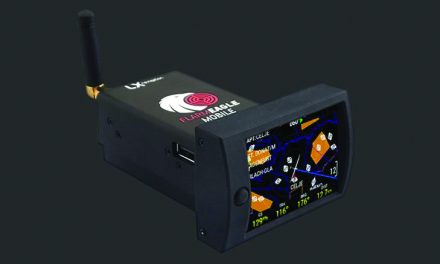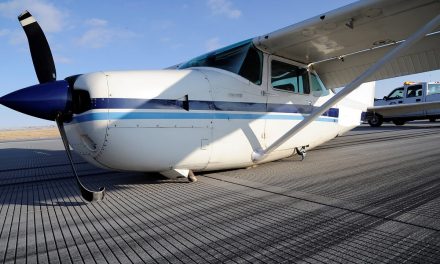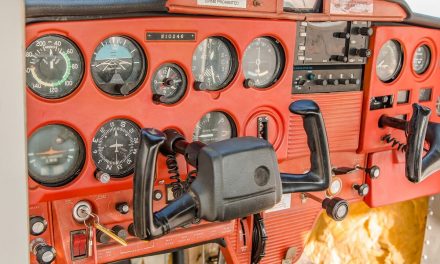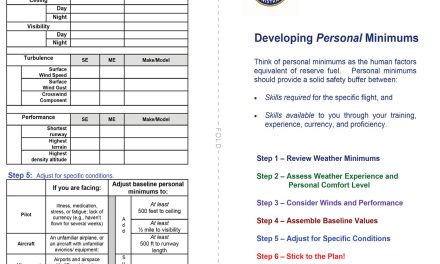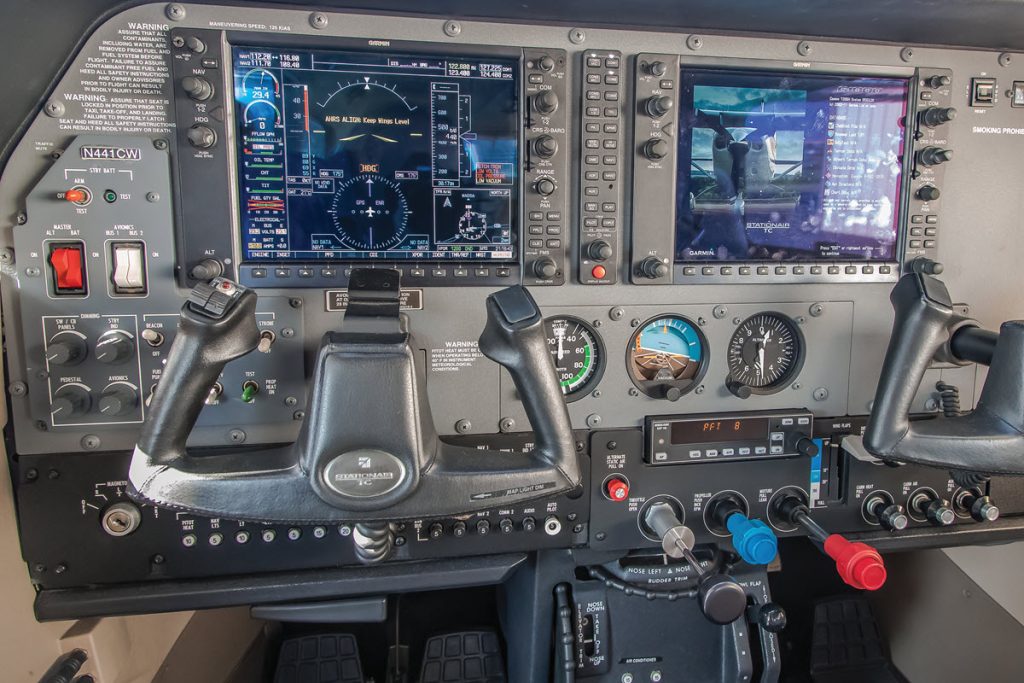
EFIS technology remains the hot topic on the minds of pilots who are upgrading their panels. Any pilot that spends any time in the clouds cannot ignore the possibility of a vacuum pump or vacuum/attitude indicator (AI) failure in weather. VFR pilots don’t share this concern. If you are concerned about your attitude in VFR, you look out the windshield and correct. The attitude indicator, in most cases, in VFR, is not contributing much to the safety of the flight. That does not mean that a VFR pilot should not understand the role of the AI, in fact I recommend every VFR pilot practice flying “under the hood.”
One Christmas I took my VFR Cherokee 140 along with my wife and brother and we flew to Nantucket for the annual “Christmas Stroll”. This is a weekend when shops and vendors decorate storefronts and sidewalks in the spirit of the season, and it draws folks from all around. This combined with the charm of Nantucket’s cobblestone streets and often a bit of fog makes for a delightful atmosphere. When it was time to depart, it was dark and visibility was okay for a VFR departure. I was cleared to depart to the south. Once I was clear of the runway, I found myself over water, in the pitch dark with absolutely no visual attitude reference. My passengers were yapping away, and I asked them to shut and let me fly. I requested a turn-back towards the land as soon as possible which took longer than I hoped. It scared me and caused me to put more emphasis on being able to fly the aircraft in this scenario.
A year later I upgraded to a Cherokee Six and was required to fly ten hours with an instructor. After two hours, the instructor was comfortable that I could handle the Six and asked what I wanted to do. I spent the next eight hours under the hood. Since the AI plays such a small role in VFR flight, VFR pilots aren’t lining up to upgrade their panels with EFIS technology.
The majority of my consultant clients come to me with outdated avionics looking to upgrade the panel for Light IFR. Most have personal minimums in the 800 to 1,000 ft AGL range. They are comfortable spending some time in the clouds but would rather be above and their destination is usually towards better weather. Approaches to minimums … “forget about it!” My philosophy is that a Light IFR pilot does not need EFIS in the panel. You can overhaul your gyros and vacuum pump for about $2,500 and have a vacuum system that you should be able to trust (with good filter maintenance) for many hours. For those pilots going light, with a long-term plan for the aircraft, who have already checked off all the important boxes, and with the desire to add EFIS (and have the dough), the discussion is electronic flight instruments, not big screen EFIS.
Let’s look at what is available today in the electronic flight instrument marketplace. Next month, we will do the same and visit big screen EFIS options. Note that Dynon actually had the first certified solid-state electronic flight instrument in their D-10A. Its role was primarily as the STC backup for their Big Screen HDX EFIS option but was also approved as the first legal replacement for your vacuum AI in your certified aircraft. The new D30 (replacement for the D-10A) is only approved as a back-up for the HDX and is no longer an option to replace your AI.
Garmin EFI Options
Garmin came to the EFI market in March of 2017 with the G5 AI and HSI. I noted at the time, that the certified G5 AI just happened to be $50 less than the Dynon D-10A which I pointed out was an example of the benefits of competition. I think the G5 would have cost more if the D-10A did not exist.
Garmin G5/AI The G5 electronic flight instrument can replace your vacuum/mechanical AI in aircraft that do not use the AI as a sensor for their legacy autopilots, as is found in many early Pipers and Cessnas. It provides primary attitude, but also supports the display of airspeed, altitude, vertical speed, slip/skid, turn rate, configurable V-speed references, barometric setting and selected altitude.
The G5/AI version can be purchased over the counter at about $2,725. Garmin’s GTP59 OAT Probe Kit (an outside mounted temperature probe) is available as an optional module for $525.
Garmin G5 HSI. An HSI’s role is to reduce pilot load by combining the DG with the CDI into a single instrument. The G5 HSI interfaces to digital (only) nav sources and to the Garmin GFC 500 autopilot (only) using the GAD 29D interface and the GMU 11 remote magnetometer. Garmin offers this package at $3,715 and can be purchased from your favorite online vendor.
The G5’s configuration doesn’t seem to work for everyone and it has limitations. It requires a careful cut on those plastic overlays and doesn’t fit as well into an existing panel as some would like. The GI 275 came along in 2020.
Garmin GI 275 AI, HSI and EIS and CDI. The GI 275 fits within a standard 3 1/8” instrument hole and eliminates the limitations of the G5.
My experience shows pilots prefer it over the G5 even at a significantly higher price point. For perspective, the GI-275 does a lot more than the G5.
The GI 275 can serve as a CDI, compatible with any nav source with standard analog or digital outputs. This is a digital CDI with no sensitive needle movements. We haven’t seen a solid-state CDI since TKM or Trimble’s TriNav. A concept that has always made sense to me! The basic CDI version runs about $3,400 and can be purchased at your favorite online store.
Also available online is the GI 275 EIS (Engine Indication System) version at about $4,000, including the GEA 24 engine interface module for Class I and II aircraft. You then add the sensor kit for $1,100-$1,500, depending on the number of cylinders. This includes CHT/EGT, Oil Pressure and Oil Temp. There are additional sensors that you will need that are not included in the basic kit.
In the AI Mode, the GI 275 AI is primary in attitude, airspeed, altitude and vertical speed and can provide a flight director function. It essentially replaces all your critical flight Instruments into a single 3 1/8” instrument. Frankly, that’s a lot of info in one instrument. The GI 275 AI with ADAHRS is $4,395 list and must be purchased and installed by a Garmin dealer.
The GI 275 HSI with GMU 11 remote magnetometer is $4,795 for Class I and II aircraft. The price jumps considerably if you’re flying Class III/Part 25. Unlike the G5, which only communicates with modern, digital nav equipment, the GI 275 works fine with most legacy navcoms. With the autopilot option ($5,795 list), this will replace your legacy, vacuum AI that drives your autopilot, including Bendix King, Century (Piper) and Cessna autopilots.
Note that Garmin now offers package deals on Dual G5 and Dual GI 275’s.

Have a website login already? Log in and start reading now.
Never created a website login before? Find your Customer Number (it’s on your mailing label) and register here.
JOIN HERE
Still have questions? Contact us here.


